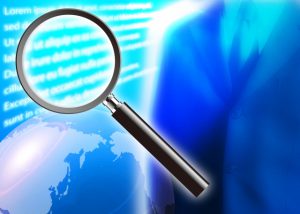 Now we explain the main steps from conducting simulation to analyzing the result as follows.
Now we explain the main steps from conducting simulation to analyzing the result as follows.
Step 1. Input scenario data in the form of “State Chart Diagram”
If the detail of the procedure is clear, input work is very simple and easy because the required components for the basic tasks are provided.
The total time to input this scenario data is about 1 – 2 hours.
(It depends on the a number of actors and length and complexity of the scenario data.)
The input work also made user’s understandings for the procedure clear.
Knowledge-base editor supported to find careless mistakes such as name mismatch between component and event handler, lack of event handler, lack of component and so on.
Step 2. Run through the whole scenario – analysis phase 1 –
This step improves the scenario data which is able to run through from start of the accident to end of the scenario.
In this improvement phase, the user can find problems, in which the interaction have stopped unexpectedly from “Sequence Diagram”, identify and correct the cause of them in “State Chart Diagram” easily and rapidly.
Because the interaction simulation could run in 100 times speed, the process of simulating, analyzing and editing can be repeated many times.
Step 2 requires as much time as Step 1.
Step 3. Focus on the limitation time and long waiting time – analysis phase 2-
Finding the late execution of the checkpoint task, long postponed task, long waiting time and long traveling time from “Sequence Diagram”, the user can investigate the causes from the “State Chart Diagram”.
Then the user can change the scenario data, assigned number of person and resources and confirm the result by running the interaction simulation.
Through the analysis, the user can find potential problems of the scenario or better assignment of person /resources.
Step 4. Consider failure of machine and trouble in work – analysis phase 3-
The interaction simulation can conduct the conditions such as a certain machine is failure and/or a trouble occurred in a certain work and it consumes long time to complete.
Simulating and analyzing the interactions under the conditions can introduce more resilient procedures or person against the accident,
Example of analysis
 The case study for a certain accident happened in an electric power station was conducted to confirm functionality and ability of the plant DiD risk monitor.
The case study for a certain accident happened in an electric power station was conducted to confirm functionality and ability of the plant DiD risk monitor.
In this case study, the several potential problems was found such as lack of the people in a certain situation, and there is no clear procedure to support the people in that situation and a certain person are assigned too much and too complex tasks.
The analysis process was very effective to understand the procedure, person assignment, and potential problems among actors.

